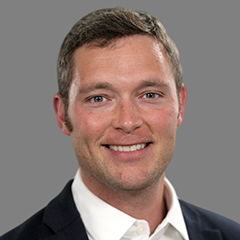 In this week’s episode of On the Evidence, we discuss a major question surrounding health care reform: What do we do about the small share of patients who represent a much larger share of overall health care use and costs? For this conversation, I brought in three guests from Mathematica’s deep bench of health care researchers—Purvi Sevak, Ann O’Malley, and Dana Jean-Baptiste, who have each studied high-need, high-use patients and efforts to improve their care.
In this week’s episode of On the Evidence, we discuss a major question surrounding health care reform: What do we do about the small share of patients who represent a much larger share of overall health care use and costs? For this conversation, I brought in three guests from Mathematica’s deep bench of health care researchers—Purvi Sevak, Ann O’Malley, and Dana Jean-Baptiste, who have each studied high-need, high-use patients and efforts to improve their care.
Click here to listen to the full interview. You can also read edited excerpts of the interview in the following transcript.
What do we know about this group of patients?
Dana: Ann and I looked at how different health care delivery organizations were identifying their high-need, high-cost patients. The National Academy of Medicine uses a definition [for high-need, high-cost patients] that has three criteria: these patients have high total accrued health care costs; they also have high intensity of health care utilization over a given period of time; and lastly, these patients have functional limitations, [which] can include limitations with activities of daily living, such as dressing yourself, grooming yourself, or bathing yourself.
One key finding about high-need, high-cost patients is that they have heterogeneous needs, and there’s no one-size-fits-all solution to address these needs. These patients are diverse. They have complex issues. They’re expensive. They’re also dynamic, because their needs can change over time. A lot of these needs also include unmet social and behavioral health needs. When I say social needs, I'm talking about housing instability, food insecurity, and transportation. In terms of behavioral health needs, that can include things like depression and schizophrenia.
Why is it important to find ways to identify these patients and improve their care?
Purvi: Some are motivated by cost. The high utilizers represent a disproportionate share of the cost, so if you can improve their care and reduce costs, it might make a dent in aggregate costs. But another motivation is to help these patients because they’re not being served well. They’re not getting the care that they need despite the fact that they have high levels of service use and high levels of spending. They’re not getting the care that they need in the most helpful way.
What progress have we made in trying to help high-need, high-cost patients?
Ann: One of the approaches being tested now is the use of care managers. The definition [of a care manager] is not universally accepted, but it basically refers to a person, typically a nurse, who works closely with the patient's primary care physician—ideally in their practice—to enhance the care that the primary care physician and team are already giving the patient. That care manager reaches out to the patient between visits to make sure that their chronic conditions are well monitored and managed. They try to catch things early before [the patient] gets to a crisis point and requires a visit to the emergency room or to the hospital.
Several different models are currently being tested. One is called Comprehensive Primary Care Plus (CPC+), and it is, to date, the largest and most ambitious primary care payment and delivery reform ever tested in the United States. It's funded by the Centers for Medicare & Medicaid Services, which partnered with 79 public and private payers across 21 regions in the United States and reaches over 15 million patients. This doesn’t apply just to the high-need, high-cost patients; this applies to primary care patients, generally.
The CPC+ initiative is focused on bolstering primary care, both by improving payment for primary care and by improving the infrastructure and staffing for primary care. One of the ways that CPC+ does this is to emphasize this concept of identifying high-need, high-cost patients and giving those patients the extra attention and extra care management that they need—not just when they’re in the office, but between visits by phone and through remote monitoring and all kinds of other ways.
It also emphasizes improving the comprehensiveness of primary care and, in particular, improving primary care’s recognition of patients’ social support and behavioral health needs. The model encourages primary care practices to coordinate with community-based resources that support patients’ social and behavioral health needs, because failing to address such needs compromises a person's ability to manage their health conditions and their quality of life.
Purvi: Rutgers University led one program that targeted patients with high levels of hospital use and spending, with funding from the Center for Medicare & Medicaid Innovation. Mathematica did the evaluation of the program. Rutgers University helped four organizations that were very different: an independent physician’s association in California; a nonprofit community health center in Colorado; a nonprofit health system that was affiliated with two hospitals in Kansas City, Missouri; and a nonprofit operator of two federally qualified health centers in Allentown, Pennsylvania. The program focused on development of individualized care plans and integrated care management services through the use of mobile care teams that met patients in the community—as opposed to meeting them in the hospital or at a doctor’s office. The care teams, which included some combination of nurses, community health care workers, and social workers, met with patients frequently. They provided education about the importance of using primary and specialty care. They also helped them make doctor’s appointments.
The patients in the program met the profile of the [high-need, high-cost] population that we’re talking about. On average, they had seven chronic conditions, such as diabetes, hypertension, and chronic kidney disease, and most had additional behavioral health conditions, such as depression. In the year prior to their involvement with the program, they had an average of four inpatient hospital admissions and five visits to the emergency department. Their spending was very high. [Among] the Medicare beneficiaries that we were able to study, their annual spending averaged $70,000, which is about seven times the national average among Medicare fee-for-service beneficiaries. We found that the program resulted in a reduction in service use. In particular, we found that the program reduced unplanned readmissions by about one-third.
What do the patients think about these care management programs?
Ann: We interviewed high-risk, complex patients who were working with a care manager and physician at their primary care practices. We asked patients, what’s your experience like working with this care manager?
If they were willing to engage with the care manager, patients tended to have positive experiences. [For example,] the patients value the time that the care manager spent listening to them and explaining things to them in lay terms. Patients [found] the care managers helpful in managing their medications, managing their chronic conditions in between visits, and—if they had been hospitalized—following up and getting them back into the office to meet with their doctor. Patients [also] liked that the care managers help them to navigate the health care system and resources in the community such as social supports. That’s just one study of complex patients who worked with care managers. There haven’t been a lot of studies like this that ask for the patient’s perspective on care management, but hopefully there will be more going forward.
It seems to me that an underlying part of our conversation is whether, or how, the health care system is addressing the social determinants of health. Do you see that as a through line in all of this research?
Ann: While it’s not the health care system’s job to provide all sorts of social supports to people in the United States—that’s why we have housing and transportation and food agencies—it is important for people in the health care setting to recognize when patients come to them with those kinds of needs. Because, absent addressing those needs, it’s hard to help them improve their health and live with their chronic conditions—or, at least, minimize the problems that they’re going to have from chronic conditions.
We're in a real bind in this country because we invest much less in our systems for social support, whether it’s housing, transportation, insurance coverage, food, security in your neighborhood, safety at home, compared with other western industrialized democracies. The failure to adequately support such needs ends up materializing in a lot of ways in people having poorer health. We have huge socioeconomic disparities in health by income, by race, and by where people live that in other countries aren’t nearly as exaggerated. It ends up becoming a problem for the health care system, and obviously it’s a problem for the people of this country. This is just one way that we’re trying to make up for that inadequate social investment as a nation.
Want to hear more episodes of On the Evidence? Visit our podcast landing page or subscribe for future episodes on Apple Podcasts or SoundCloud.
Show Notes
Jean-Baptiste, D. “Targeted Treatment: Addressing the Complex Needs of High-Need, High-Cost Patients.” Evidence in Action blog, January 16, 2019.
O’Malley, A., E. Rich, R. Sarwar, E. Schultz, W. Warren, T. Shah, and M. Abrams. “How Accountable Care Organizations Use Population Segmentation to Care for High-Need, High-Cost Patients.” New York, NY: The Commonwealth Fund, January 2019.
Sevak, P., C. Stepanczuk, K. Bradley, T. Day, G. Peterson, B. Gilman, L. Blue, K. Kranker, K. Stewart, and L. Moreno. “Effects of a Community-Based Care Management Model for Super Utilizers.” The American Journal of Managed Care, vol. 24, no. 11, 2018, pp. 365–370.
Jean-Baptiste, D., A. O’Malley, and T. Shah. “Population Segmentation and Targeting of Health Care Resources: Findings from a Literature Review.” Washington, DC: Mathematica Policy Research, December 2017.
O’Malley, A., D. Peikes, C. Wilson, R. Gaddes, V. Peebles, T. Day, and J. Jin. “Patients’ Perspectives of Care Management: A Qualitative Study.” American Journal of Managed Care, vol. 23, no. 11, 2017, pp. 684–689.
Gawande, Atul. “The Hot Spotters.” New Yorker, January 16, 2011.


